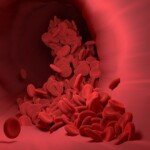Navigation of the CNC mill rotary machining world: a comprehensive guide
In the ever-evolving landscape of precision manufacturing, CNC (Computer Numerical Control) mill machining has become a revolutionary solution for the production of complex, highly intelligent components. This advanced technology enables milling and converting operations into a cohesive unit to machining parts from multiple angles in a single setup. For manufacturers’ efforts to deal with complex designs or demanding tolerances, the mill rotary center simplifies the process while improving quality and efficiency.
How CNC mill machining works
The core of the milling machine combines the rotational movement of the lathe with the multi-axis versatility of the CNC mill. This is a crash:
- Dual-function tool: The rotating workpiece is fixed on the main shaft of the machine, while the real-time milling tool (powered by a separate motor) performs operations such as drilling, tapping, contours and grooves.
- Multi-axis synchronization: Most milling systems provide 5-axis control (X, Y, Z, and rotation axis C and/or B), allowing the tool to approach the workpiece from any direction without repositioning.
- Single setting advantages: This section is still clamped throughout the machining cycle, eliminating errors due to refixation and reducing cumulative tolerance issues.
Why choose milling? Key Advantages
- Enhanced accuracy: By minimizing changes in settings, the milling machine maintains excellent concentricity and positional accuracy (±0.005 mm is achievable). It is crucial for tight tolerances aerospace or medical components.
- Short delivery time: Consolidate milling and rotation to reduce production time. One machine accomplished two tasks, speeding up orders.
- Cost-efficiency: Reduce labor, less machinery and minimize waste, and reduce overall cost per part.
- Complex geometric shapes make it simple: Conical shape, asymmetric features and depth cavity – once considered "Unable to shoot"- Now possible.
Applications and Industry
Milling technology is good at situations where complexity, precision and material integrity are not negotiable. Key departments include:
- aerospace: Turbine blades, engine mounting and landing gear assembly in titanium or inconel.
- Medical: Bone screws, surgical tools and implants, need to have biocompatible metals (such as stainless steel 316L).
- car: Transmission shaft, injector assembly and lightweight structural components.
- vitality: Valve body, pump housing and drilling equipment that withstand high pressure/corrosion.
Material versatility: What can be processed?
The Modern Mill Turning Center deals with a range of materials including:
- Metal: Aluminum alloys, stainless steel, titanium, brass and strange alloys such as Hastelloy®.
- plastic: Engineering grade polymers (PEEK, UHMW, DELRIN®).
- Composite materials: Carbon fiber reinforced plastic.
exist Greglight CNCOur expertise covers all these and other materials, as well as customized solutions for thermally sensitive or high-strength metals that are critical to industries such as defense.
Why collaborate with Greatlight CNC?
As a pioneer in five-axis CNC machining, Greatlight provides milling solutions that set the industry’s benchmark:
- Advanced machinery: We operate state-of-the-art mill centers equipped with on-site spindles, high torque options and automatic pallet changing racks for uninterrupted production.
- End-to-end expertise: From CAD/CAM programming to post-treatment, we offer a comprehensive service including heat treatment, anodization, plating and custom finishes – all under one roof.
- Accuracy standard: Using the ISO certification process and iterative quality inspection, we ensure that the ASS9100 in sectors such as aerospace is compatible with output.
- Quick customization: Whether it is prototyping or mass production, we optimized our workflow to provide complex parts in less than 5 days.
The main considerations when choosing a mill
While the milling system is transformative, successful implementation depends on:
- Part complexity: Very suitable for geometric shapes that require multiple facets at the same time. Simpler parts may benefit from conventional methods.
- Volume flexibility: Cost-effectiveness for small batch customization work (1-100 units) and high batch batches (more than 10,000).
- Design cooperation: Work with your manufacturer as early as possible to optimize DFM (for manufacturing design). Through the mill conversion function, functions such as undercut or thin wall can be enhanced.
in conclusion
CNC mill processing is no longer a luxury, but a necessary condition for promoting precision engineering innovation. By combining turn and milling operations, manufacturers achieve unprecedented efficiency and accuracy, reducing waste while expanding design boundaries. exist Greglight CNCWe combine cutting-edge five-axis milling technology with decades of metallurgy expertise to provide solutions for the most challenging applications. From rapid prototyping to full production, our commitment to quality, speed and affordability makes us an ideal partner for customizing precise parts. Ready to improve your project? Reach out today to gain cost-effective advanced manufacturing experience.
FAQ: Get rid of the mysterious mill processing
Q1: How is milling processing different from traditional CNC milling or rotation?
one: Traditional milling and rotation involve separate machines for rotation (lading) and subtraction (mill) processes. Mill-Turn integrates these two into a system, allowing for multi-faceted operation without having to disengage the artifacts. This cuts the setting time, eliminates alignment errors, and improves accuracy.
Question 2: What materials can’t be processed through the mill?
one: The Mill Steering Center can handle almost all processable materials, from soft plastics to superalloys. The only exceptions may be brittle ceramics or very low melting point metals that require special cooling. For details, please consult our team.
Q3: Mills are only suitable for complex parts?
one: Although ideal for complex designs, mill conversion is also effective for high volume operation thanks to its automation capabilities. Simple cylindrical parts with secondary features (e.g., span holes or slots) are large.
Q4: Can milling machines perform grinding or additive manufacturing?
one: Modern hybrid systems can integrate grinding or laser metal deposition (LMD). Greatlight’s model focuses on subtraction processing, but supports auxiliary processes such as polishing through secondary attachments.
Q5: How to ensure the accuracy of medical-grade implants?
one: We use ISO 13485-compliant controls, material traceability schemes and finishing surface treatments such as eliminating burrs and improving biocompatibility.
Question 6: What is the typical turnaround time for a milling project?
one: Standard delivery times range from 5 days to 3 weeks depending on complexity, material availability and finishing. An expedited selection is available for emergency requests.
Q7: Does Greatlight support low-batch prototype orders?
one: Absolutely. From one-time prototypes to trials, we offer cost-effective solutions with fast iterations. Our citation process is streamlined online and has instant online support.
choose Greglight CNC To achieve the accuracy of this moment. Your innovation, our mechanical spirit – perfectly made.

















